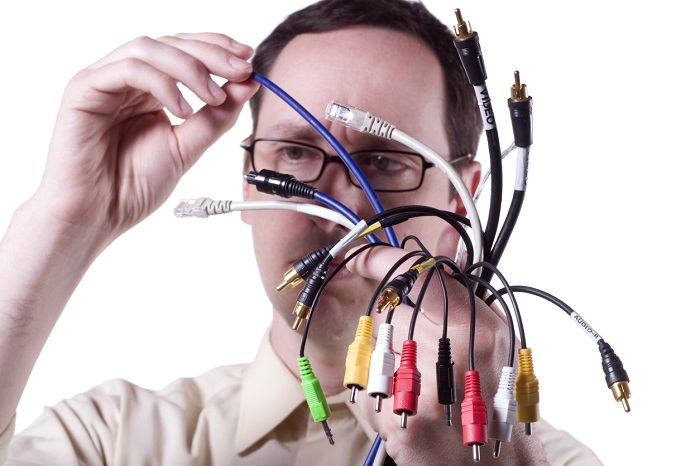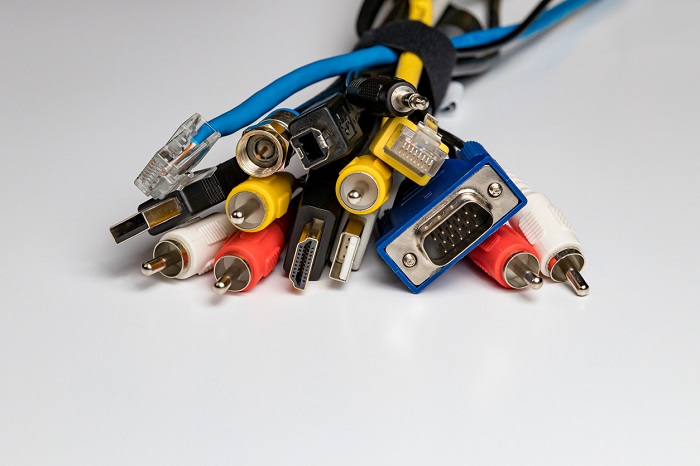Cable management is like cleaning a room or organizing clothes in a closet. It’s a hassle in the moment, but the final result is a spotless, efficient, and ordered space.
Unfortunately, cable management isn’t as quick and easy as vacuuming or putting clothes away. If left unattended, tangled cords can quickly take on a life of their own and become a single, writhing mass. Unorganized cables can lead to stress and require a significant amount of time to reorganize. Someone can even trip over a bundle of cables if not addressed.
Cable management is essential for a visually pleasing and clean entertainment environment. Managing cables and wires helps to maintain cables’ basic functionality and protects devices from a clogged airflow. We’re untangling everything you need to know about cable management in this simple four-step guide:

1. Start from Scratch
Whether you’re organizing a brand-new setup or working with an existing design, this is your chance to start with a clean slate.
Disconnect peripherals from the television and entertainment stand, and unplug any technology connected to the surge protector. You’ll want to wipe any dust from the cables and check them for wear and tear.

2. Position Your Power Source
An important part of cable management is the location of the power strip. It’s natural to want to connect the power strip to the closest electrical outlet, but it’s vital to position the surge protector strategically to enable a more effortless cable-management experience.
Consider placing the surge protector under the entertainment stand by fastening it with a mount. You can also hide surge protectors on the floor between stands, chairs, or other furniture, or place them in a neat cable-management box.
3. Incorporate Cable-Management Solutions
Many entertainment stands and media centers now include cable-management features, such as cable nets and grommets, designed to hide cables easily.
A cable wrap provides an easy way to consolidate all the loose cords that dangle from the television or speakers. Cable ties are also versatile options for bundling large cord runs.

4. Route the Cables
Once the wires are properly organized, it’s time to reconnect all peripherals to the television and hide the cables through your cable-management system. Don’t be discouraged, but despite your efforts, there will likely be cords that are impossible to tuck away neatly. That’s okay — utilize cable clips to manage stray cables that couldn’t make it into the cable-management compartment.
The road to clean cable management isn’t always straightforward. And good cable management is an ongoing process, not a one-time project. Keep it simple, and utilize taming techniques that can be updated over time as you add or remove cables.
We provide many options for cable-management solutions; Contact us today to learn more about our products, services, and suggestions for cable management.